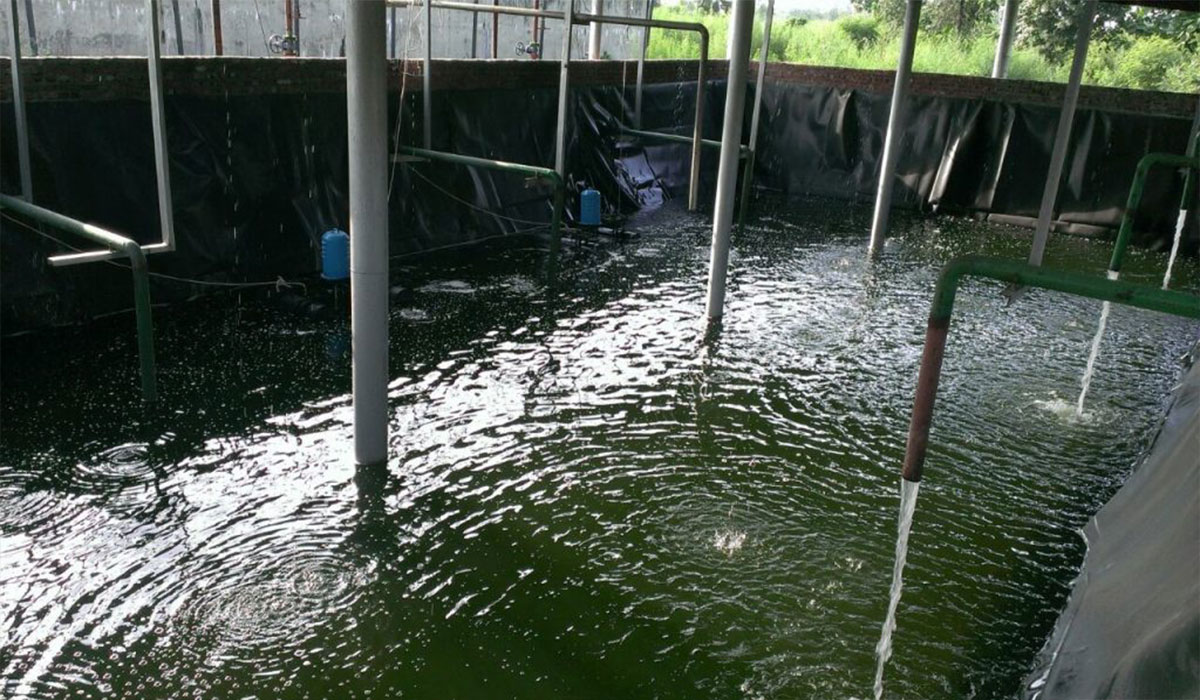
72 kLD micro-algae based dye decolorisation and COD reduction plant established on dye effluent with very high microbial toxicity.
Pasupati Acrylon Ltd is one of the largest producers of acrylic fiber in the country, with a range of options products ranging from just raw white and bleached fiber to tow-dyed fabric. Recently, the company has established a gel-dyeing unit to produce fabric of a much superior nature.
pH : 2-3
TDS : <10000
COD : upto 1800 ppm
Flow : 72 KLD
Colour : upto 2000 Co-pt
Microbial Toxicity : Very high
To remove microbial toxicity so that the effluent can be taken in the existing ASP.
To reduce the colour from effluent
To reduce the COD load
To neutralize pH without any chemical addition
Before Algae Treatment: The effluent was coming from a gel dying plant. The generated effluent was then neutralized by chemicals and then taken into the ASP. Due to high microbial toxicity, the ETP used to get disturbed and due to regular problems in the ETP, the client decided to stop the manufacturing of gel dyed fabric till they managed to manage the gel dye effluent. The client had tried out numerous chemical and biological solutions, but to no avail.
After Implementing the Algae Technology:
Toxicity: The microbial toxicity of the effluent has been removed completely and after removing the toxicity, the effluent is taken into the existing Activated Sludge Process (ASP) of 7800M3.
Microbial Toxicity test of raw gel dyeing effluent and microalgae treated effluent was performed against Gram positive (Bacillus Subtilis) and Gram negative (Escherichia coli) . Absence of inhibition zones was observed in microalgae treated effluent against both the organisms, it indicates that microalgae degraded the complex compounds in the Gel dyeing effluent which exerts microbial toxicity.
Phytotoxicity test results showed that the plantlets were healthy in control and algae treated samples. However, growth was inhibited/restricted in the untreated effluent. The results also shows that samples are non-toxic treated with microalgae
RAW and TREATED effluent
pH:
The effluent was acidic in the range of 2-3 pH value which earlier required neutralization through lime. Since the algae technology is implemented, there is no chemical addition and the whole effluent is being neutralized through a biological process.COD:
The effluent has very complex COD and the average COD during the treatment cycles as shown in graph was around 685 ppm which was quite difficult to degrade with various methods. The algae has reduced the average COD to around 280 ppm..BOD:
during the treatment the effluent has average BOD as 330 ppm which is decreased significantly and average BOD found as 55 ppm.